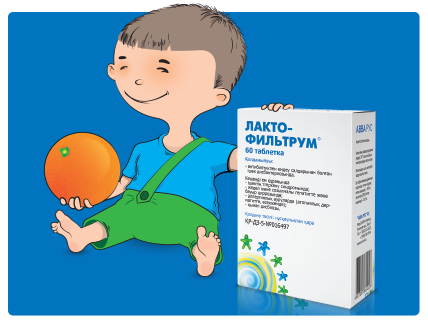
For children
What you need to know aboul children allergy
Frequency of allergy diseases is growing every year. Most adults face allergic-contact reactions to allergens ‘flying in the air’ (dust, flower dust, fungi, animal hairs etc.) meanwhile children have allergic responses to different products.
Fact 1. Food allergy more often happens to children under 2 years of age and runs its course with aging
It is related to unformed digestive system. With aging digestive tract matures and food allergy (FA) vanishes. But in some cases FA doesn’t vanish and might grow into allergic rhinitis, conjunctivitis or even asthma. This phenomenon in medical science is called ‘atopic march’.
 Fatc 2. Up to now there is no answer why ‘atopic march’ happens
Fatc 2. Up to now there is no answer why ‘atopic march’ happens
It is proved that that risk of allergy occurence within children constitutes 30-40% if one of the parents suffers from allergy; and 70-75% if both parents suffer from this disease. Risk of ‘atopic march’ will decrease if thorough treatment and preventive treatment of food allergy are being carried out.
Fact 3. In most cases FA might be caused by well-known products
It is surprisingly that the most allergic product for infants is not chocolate or exotic fruit but ordinar cow milk. Apart from milk ‘the great eight’ of the most allergic products comprises: chicken eggs, wheat, peanuts, soybeans, nuts, shrimps, crabs and fish.
Fact 4. Atopic dermatitis in most of children is caused by food allergy
Allergy/food sensitization may contribute to the development of atopic dermatitis, and more often in children than in adults.

Fact 5. The significant factor in the risk of atopic dermatitis is the intestine dysbacteriosis
In 80-90% of children with atopic dermatitis, intestine dysbacteriosis is revealed. Up to now specialists argue what apprears first: atopic dermatitis or intestine dysbacteriosis . It is exactly known that a child in atopic dermatitis confronts vicious cycle: hypersensitization – itch – nervous-reflectory irritability – vegetative viscelar disturbance – digestive tract disfunction – hypersensitization(1).
Besides, presently it is proved that intestine dysbacteriosis in the AD affects indirectly the composition of skin micro flora: decrease of lactobacteria in the intestine brings about growth of Staphylococcus epidermidis on the skin which consequently might cause allergy and infectious complications*.
*Atopic dermatitis and dysbacteriosis. Yu.А. Gallyamova, M.D., prof.of the Russian Medical Academy of Post-Graduate Education, Moscow, Your Doctor, as of Nopvember 2010г, p.2-5.
Complex treatment of allergodermathosis in children
- Skin care
- Elimination diet (exception of allergens ) and regime
- Local dermatic treatment
- Systematic medical products
 The up-to-date innovative product Lactofiltrum® has complex effect on organism, and allows decreasing duration and intensity of skin itching and prolonging significantly terms of AD remission in children.
The up-to-date innovative product Lactofiltrum® has complex effect on organism, and allows decreasing duration and intensity of skin itching and prolonging significantly terms of AD remission in children.
Lactofiltrum® contains two active components:
- sorbent which withdraws allergens and toxic agents out of organism;
- prebiotic which revives intestine micro flora.
Lactofiltrum® in AD promotes:
- sorptions of allergens and toxic agents
- increasing of skin protective functions and preventing infectious AD complications
- Immune system strengthening and reviving of the intestinal microbial balance.
 How to take Lactofiltrum®(sachets)
How to take Lactofiltrum®(sachets)
Lactofiltrum® along with lactulose contains sorbent lignin, which has strong sorption force and is able to tie up and withdraw toxic agents and pathogenic bacteria as well as some beneficial food items and other medicines taken along with Lactofiltrum®.
Lactofiltrum® can be used during complex therapy with other medicines, stick to the rules of separate administration.
- Take Lactofiltrum® 1-1.5 hour before or after meal or other medicines.
- 1-3 years of age, 1/2 of a sachet 3 times per day;
- 3-7 years of age,1 sachet 2 times per day;
- 7-11 years of age, 1 sachet 3 times per day;
- Over 11 years old, 2 sachets 3 times per day.
Course of administration: 10-14 days or according to the doctor’s prescription.
Counter-indications: individual intolerance of the product components.
for product and general inquiries: info@avvapharma.com
Instructions for use and indications are country specific. check product patient information leaflet in your market. Do not exceed recommended dose.
If you are pregnant or nursing, under the age of 18, or have a known a medical condition, you should consult your physician before using this or any dietary supplement.
Dietary supplements should not be used as substitute for a varied diet.
STATEMENTS HAVE NOT BEEN EVALUATED BY THE FOOD AND DRUG ADMINISTRATION OR APPLICABLE AUTHORITY.